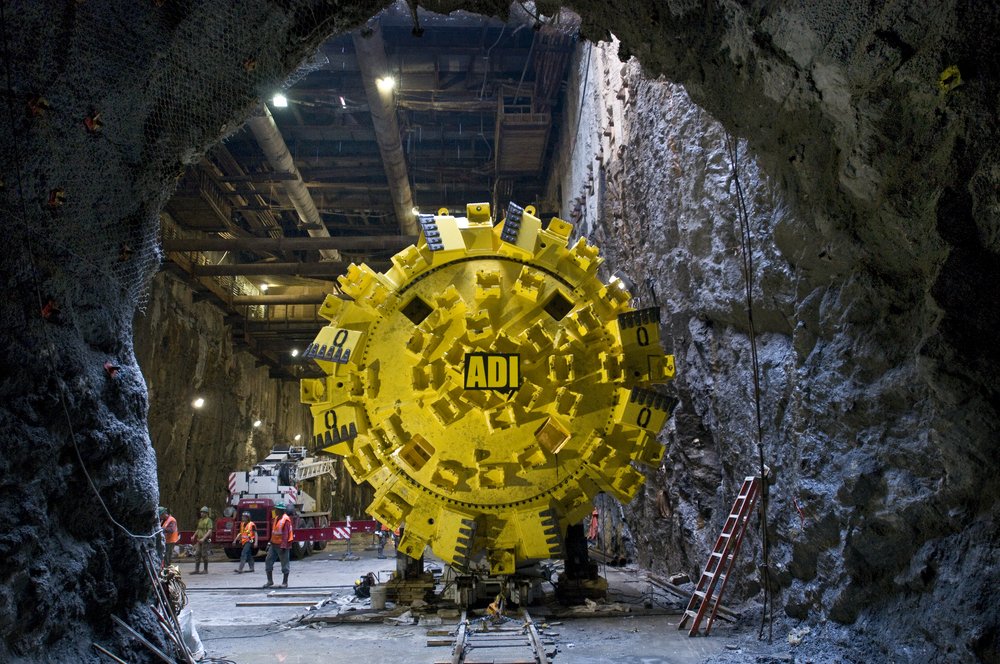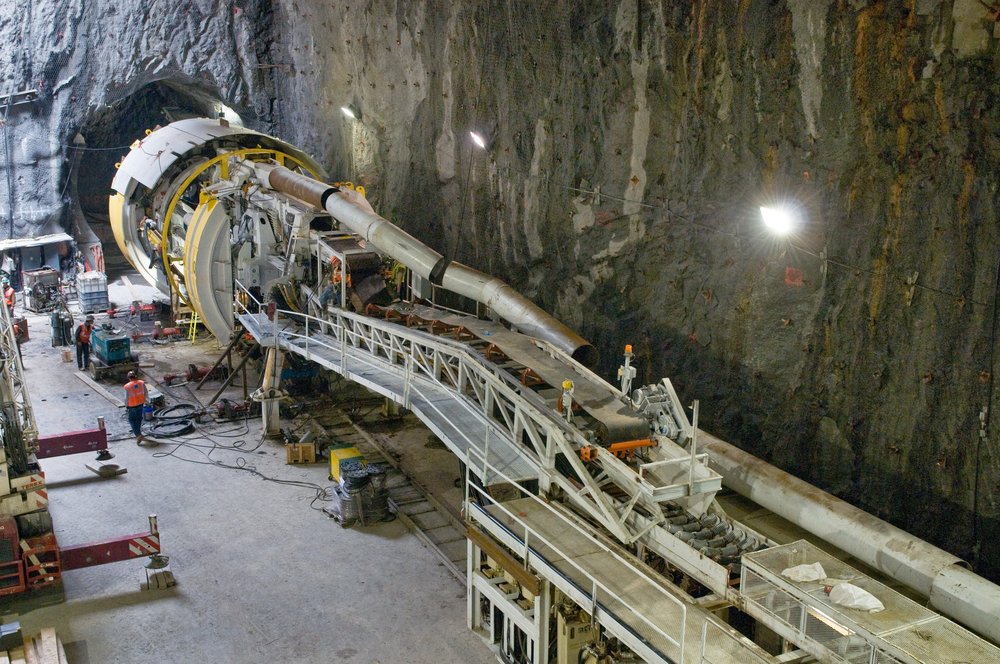Boring in El Barrio: The 700-ton machine that’ll dig NYC’s Second Avenue subway extension
Aug. 22, 2025, 11:01 a.m.
The MTA’s new tunnel boring machine is about as exciting as it gets.

This column originally appeared in On The Way, a weekly newsletter covering everything you need to know about NYC-area transportation.
Sign up to get the full version, which includes answers to reader questions, trivia, service changes and more, in your inbox every Thursday.
The MTA’s new tunnel boring machine is about as exciting as it gets.
The transit agency’s board on Monday inked a nearly $2 billion contract for a private company to extend the Q line by three stations into East Harlem as part of the second phase of the Second Avenue subway.
The crown jewel of this contract: the delivery of an approximately 700-ton tunnel boring machine from Europe at the start of 2027. The behemoth is a marvel of technology that will simultaneously dig and build the tunnel between 120th and 125th streets along Second Avenue before turning west toward Lexington Avenue.
“ Government is not always that adept at taking advantage of industry standard innovations, and the MTA hasn't been in the past, including in phase one [of the project],” MTA construction chief Jamie Torres-Springer said. “So us adopting the industry standard here is a very big deal and it's going to save us a lot of money.”
When assembled underground, the machine will measure between 250 and 300 feet. The circular cutter will excavate a hole 22 feet in diameter. It can dig about 35 to 40 feet per day, while installing the tunnel lining at the same time by injecting a mix of clay, cement and water into the tunnel face during excavation. The material, called “pressurized slurry,” stabilizes the loose earth below East Harlem to prevent the hole from caving in.
The equipment will be built by Herrenknecht in Germany, according to the MTA. Workers on the Gateway Project are preparing to use a different type of boring machine from Herrenknecht to dig new tubes beneath the Hudson River next year.

Just getting the machine underground at 120th Street and Second Avenue is a huge undertaking that the MTA anticipates will take at least three months. Workers will then assemble it belowground.
“[These machines] are really, really long,” said Magued Iskander, a geotechnical engineering professor at NYU. “Certainly the hardest part of the job is the access points. You have to lower it to place.”
The machine is so efficient that workers in the tunnel never see the exposed earth before the concrete lining is applied, according to Kurt Egger, an MTA executive on the project.
Transit agency officials said they learned a lot from the Second Avenue subway project’s first phase on the Upper East Side, which experienced several delays. Officials said the agency didn’t originally perform an adequate geotechnical analysis, and the boring machine used in that phase didn’t simultaneously line the tunnel like the new one will.
Egger said the new machine allows crews to make quick adjustments depending on ground conditions, including hard rock and loose soil.
“ Having this type of machine basically takes away the risk of running into a ground condition that you're not prepared for and having to stop,” he said.
The work is a lot more efficient than the way the city’s subway tunnels were built last century. Under Sixth Avenue, for example, construction crews used dynamite to bore tunnels, according to the New York Transit Museum.
Once the digging is completed in East Harlem, the MTA plans on leaving parts of the machine below East 125th Street in anticipation of extending the subway west.
“ This is not your grandfather or grandmother's tunnel boring operation here from a century ago,” Torres-Springer said. “We've really placed the MTA at the cutting edge.”
NYC transportation news this week
- The Trump administration’s latest fight with the MTA. Federal transportation officials this week threatened to withhold some funding from the MTA, claiming the agency’s leaders keep underplaying the safety risks that transit workers face on the job.
- Down a voice. Mayor Eric Adams has bashed the MTA’s coming 10-cent fare hike as “offensive to hardworking New Yorkers,” but after the resignation of one of his four MTA board appointees, he has even less leverage in the room.
- NC-16 Citi Bikes. Lyft, the ride-sharing company that operates Citi Bike, has agreed to the Adams administration’s request to implement age verification technology to ban riders under 16.
- What about the Bronx? Since 2020, the MTA has approved a combined $10.8 billion to upgrade signal systems along a combined 162 miles of subway tracks — none of which are in the Bronx.
- Neigh? Whoever wins November’s mayoral election will likely be forced to decide on the future of Central Park’s carriage horse industry, an issue that’s been thrust back into the conversation after a horse died earlier this month.
Curious Commuter
Have a question for us? Use this form to submit yours and we may answer it in a future newsletter!
Curious Commuter questions are exclusive for On The Way newsletter subscribers. Sign up for free here.
Question from Jonathan from Brooklyn: I thought that they left the boring machine at the end of the tunnel when they finished the first segment and were going to keep using it for the second [segment], but I read that the MTA bought new boring machines. What happened?
According to the MTA, the previous boring machine was already taken out of the ground sometime after the project’s first phase wrapped up. Tunnels are already in place to East 120th Street, thanks to work done in the first phase of the Second Avenue subway project, as well as an excavation project in the 1970s that was suspended due to the city’s financial crisis. The transit agency said it bought a new boring machine for phase two that better excavates softer soils and lines the tunnel at the same time as it digs.
East Harlem families facing eviction by MTA to make way for Second Ave subway